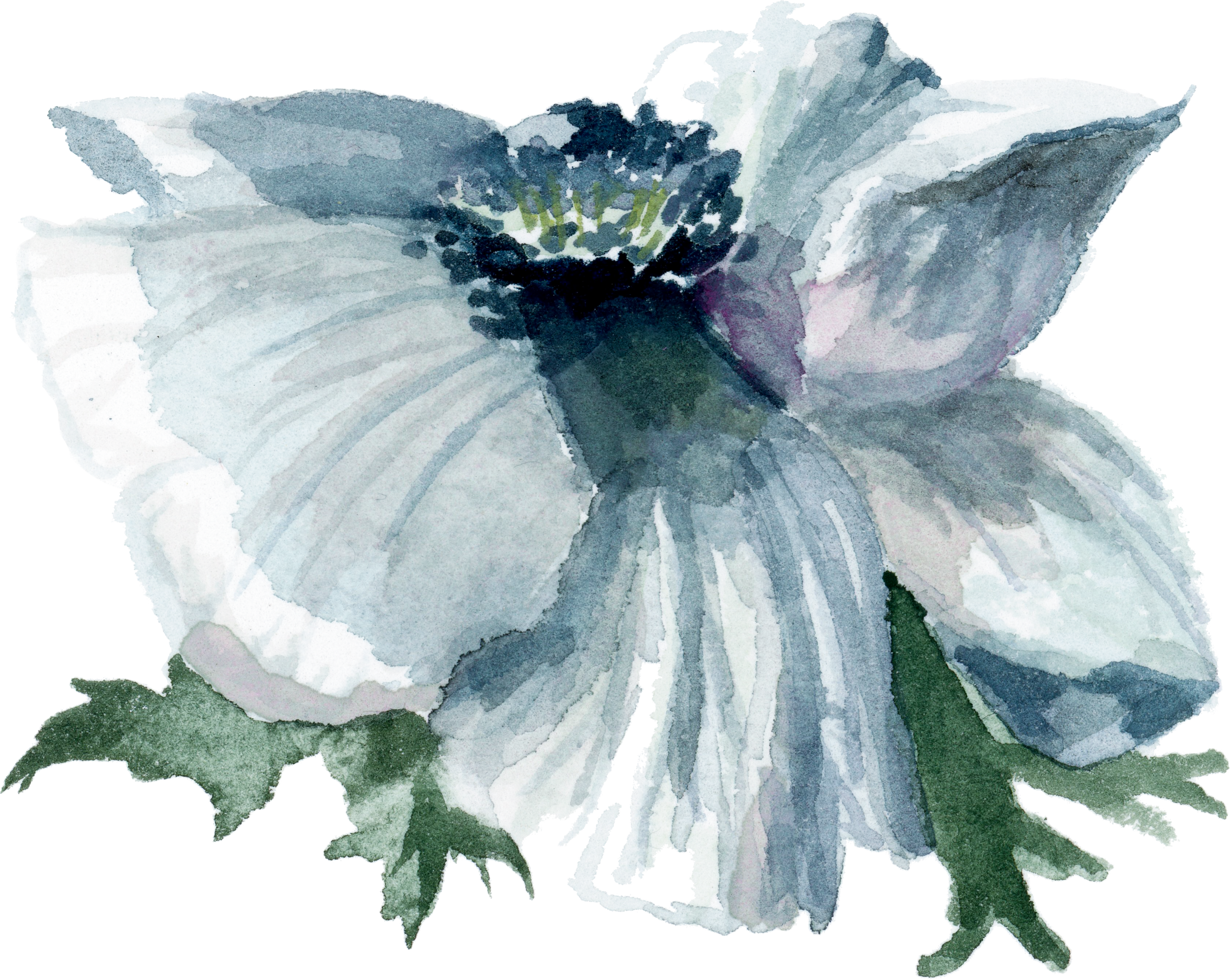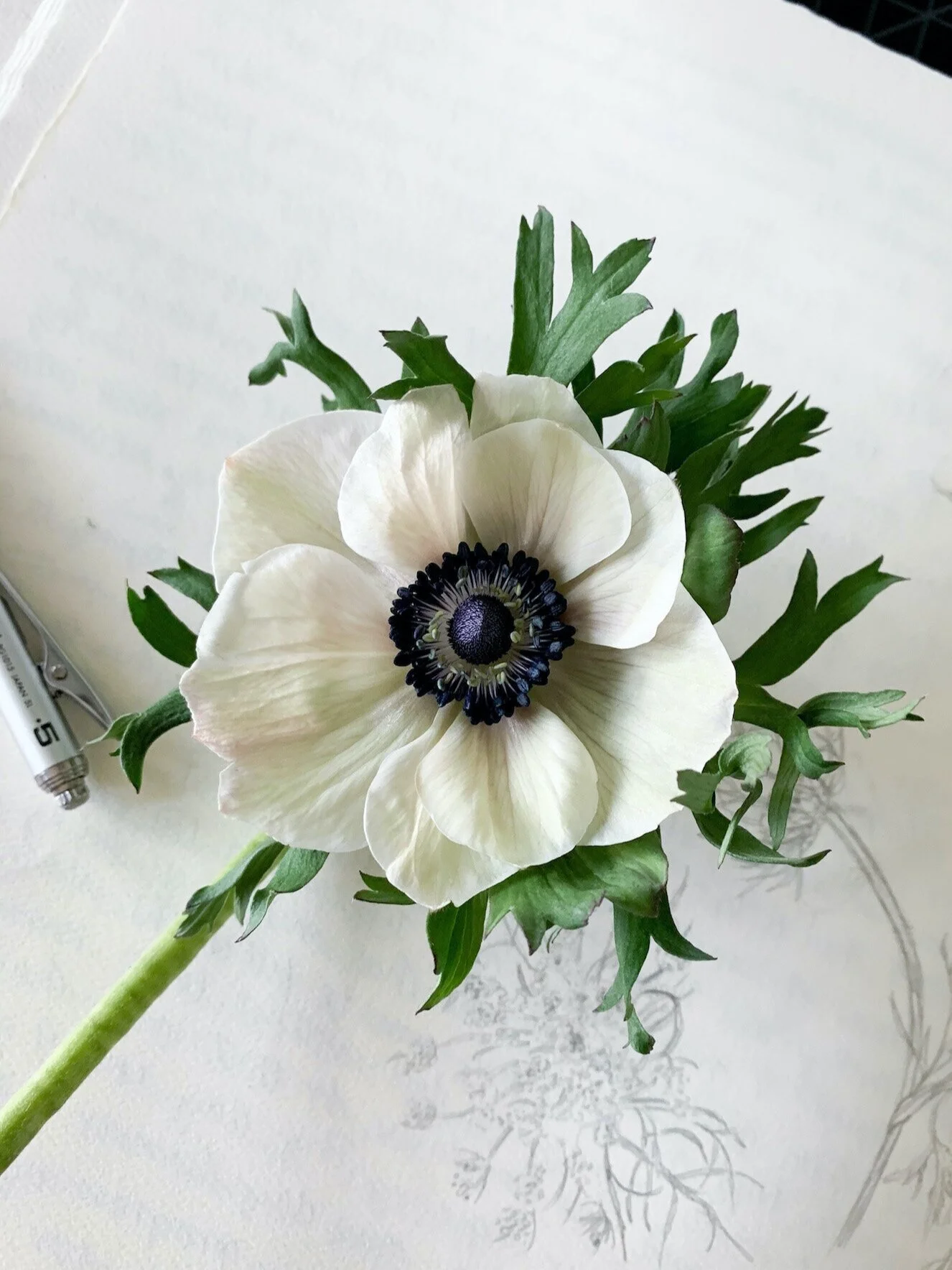The Poppy Anemone
I’d found myself on my hands and knees in the very back of the flower wholesaler's refrigerator. Hiding behind several tall specimens were blooms of shorter stature but with intriguing faces. Delicate white petals and bold blue-black centers of Poppy Anemones (Anemone coronaria) stared at me in the cold. The flowers could have easily been porcelain, and I knew I had to paint them.
Back in my studio, the petals of my prize slowly opened, revealing that they weren't so "Black and White," as the name of this cultivar suggests. Radiating from the center was a faint magenta flush that bled into the creamy, almost yellow petals. Each flower did this to a different degree. I got lost in the velvety blue of the stamens that looked like something I'd seen in a dramatic eyeshadow palette.
Scroll below to read what I learned about the Poppy Anemone’s origins, myths, meanings, and how to grow them for yourself!
Origin & Myth
Over a couple of days, I painted these fragile beauties, studying their gentle, cupped shape. Come to find out, they are part of the buttercup family Ranunculaceae. The Poppy Anemone is a native of the Mediterranean region, and their name, "Anemone," comes from the Greek word "anemos," meaning "winds." Another common name for an Anenome is a "windflower," as the wind spreads their seeds. The species name, "coronaria," means "crown," referencing the beautifully structured center. As you might have guessed, the Poppy Anemone closely resembles an actual poppy. Poppy Anemones are only one of over 150 species in the genus Anemone. Anemones grow wild from Japan to Europe to North America.
Myth has it that the red Poppy Anemone grew at the site of Aphrodite's shed tears following the slaying of her lover, Adonis. Art history often depicts the Virgin Mary at the crucifixion surrounded by the same red cultivar. It is then no wonder that in the Victorian flower language, anemones symbolize loyalty and the fragility of life. Each color also boasts a unique symbolism: white for sincerity, red/pink for forsaken love, and purple/blue for protection.
How to Grow Poppy Anemones
All anemones are herbaceous perennials grown from tubers planted in the ground either in the Fall (zone 6 and up) or early late-Winter/early-Spring. They can grow up to 1.5 feet and have a spread of .75 feet. As the Poppy Anemone is a Mediterranean native, it needs only moderate watering. Perhaps Aphrodite's tears? It's a relatively low maintenance plant, and because it is poisonous deer will leave it alone.
Anemones will begin producing blooms as soon as three months from their planting date. Deadheading any spent flowers you don't cut for an arrangement will help the plant stay productive for up to ten weeks, depending on the original planting time. For a more in-depth resource on growing anemones, check out Floret Farm's step-by-step guide.
Anemones As a Cut Flower
As a cut flower, anemones can last from anywhere between 3-10 days. Harvest anemones as soon as the petals open. Cut the hollow stems at an angle with very sharp shears to keep them from buckling. Also, be aware the paper petals are easily bruised and torn, so handle with care. To ensure the longest vase life possible, use a floral preservative, and keep an eye on the water levels. Anemones are heavy drinkers!
After having stared into the crowns of these beauties for days and digging into their myths, symbols, and facts, I can't help but feel the urge to give the Poppy Anemone a place in my garden, if for no other reason than to paint them more often. Tell me below, am I going to run into you shopping for tubers or have you grown Poppy Anemones before? What are your best tips?








